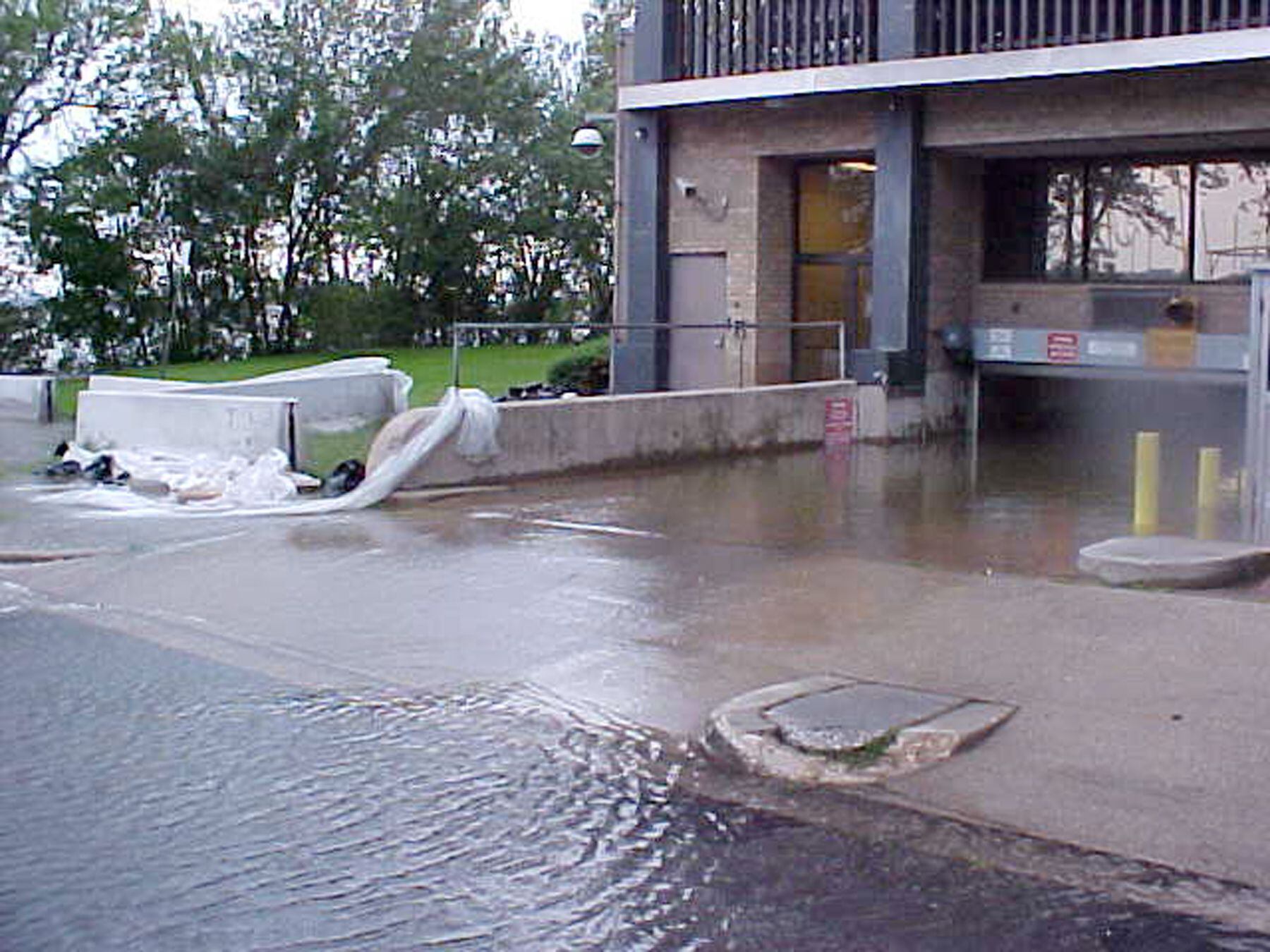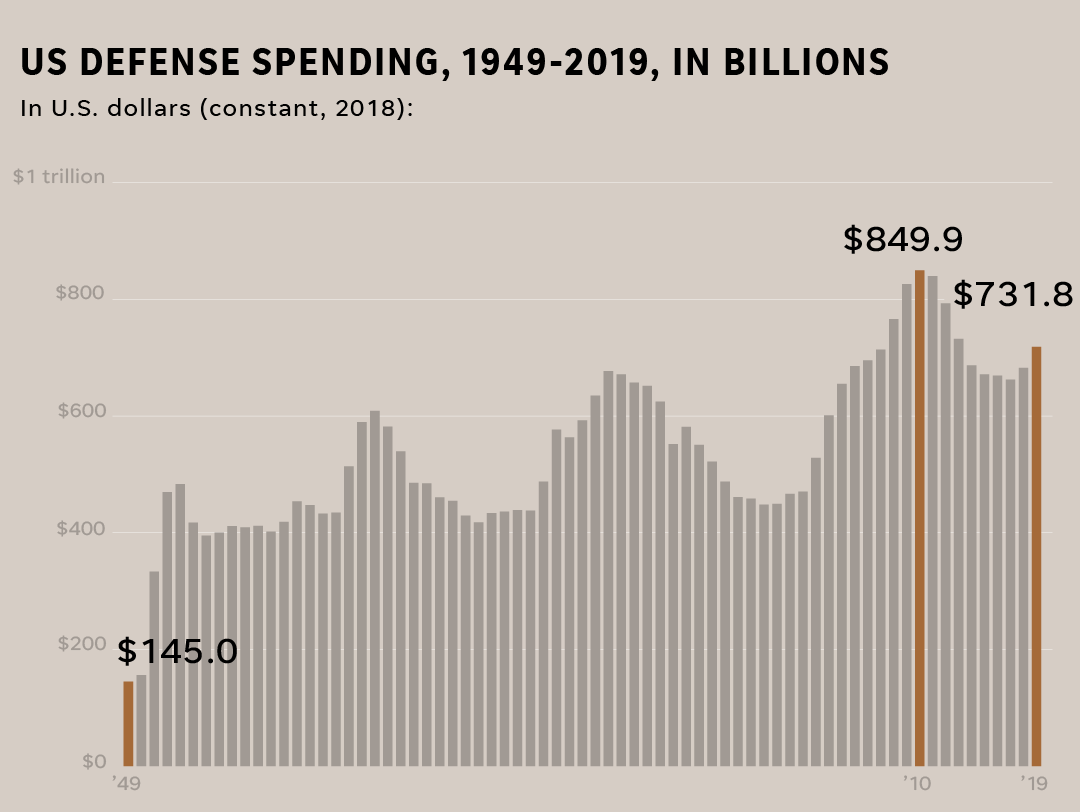Gulf Coast Military Bases - U.S. service members across the country may already be exposed to environmental hazards while stationed at certain military bases. Many of the toxic chemicals present on the base have been linked to health problems. If you develop a medical condition after serving in the military, you may be eligible for disability compensation through the Department of Veterans Affairs.
Here's what veterans need to know about potential toxic exposures on U.S. military bases and filing a disability claim for VA benefits.
Gulf Coast Military Bases

The Environmental Protection Agency (EPA) initiated the Superfund program in 1980 when Congress enacted the Comprehensive Environmental Response, Compensation, and Liability Act (CERCLA). The program is designed to clean up land that the EPA deems contaminated with waste that is harmful to human health and/or the environment. Because the United States operates in many countries through private business, government, and military programs, Superfund sites can be found all over the world. Complex assessments are involved in determining whether a site should be considered a Superfund site. The assessment includes looking at the type of poison; whether toxins are found in the soil, water, air, or sediment; and what stage the site cleanup is at. The main toxins evaluated by the EPA are asbestos, dioxins, lead, polychlorinated biphenyls (PCBs), and radiation.
Us Military Budget: What Can Global Bases Do Vs. Covid, Cyber Attacks?
Considered a case of VA health problems associated with certain types of military service. For example, the Veterans Affairs Department hypothesizes that certain Vietnam veterans with diseases such as chronic B-cell leukemia and non-Hodgkin's lymphoma were exposed to Agent Orange. This means they automatically receive disability benefits. The Department of Veterans Affairs has a similar presumptive condition for Gulf War veterans.
The Department of Veterans Affairs has authorized certain deeming benefits for veterans stationed at Fort McClellan, Alabama, and Camp Lejeune, North Carolina, for specific periods of time. Veterans stationed on the base may have been exposed to a variety of toxic substances through the contaminated water, which could have serious health effects. There is also a presumptive status called "atomic veteran" for veterans who meet certain radiation exposure criteria. Veterans stationed at bases listed as EPA Superfund Cleanup sites still have the option to file compensation claims for direct service connections, as long as they can demonstrate a risk associated with the service.
EPA currently has more than 130 U.S. military installations and sites listed as Superfund priorities. Below is a list of major military sites by country and the toxins associated with each facility.
The Department of Veterans Affairs will consider several factors when determining eligibility for compensation based on toxic exposure. For most of these sites, veteran exposure would be minimal based on the veteran's occupation, location, and whether they were specifically exposed to these pollutants. Also, many languages have no garbage except at certain times. And, while not every service member may be exposed, if you live in one of these facilities and have a medical condition related to one of the poisons, it's a good idea to ask your healthcare provider about possible contacts and documentation. demand compensation. For a complete list, visit the EPA Superfund website.
Us To Establish Military Base In Israel
Cyanides, phenols, pesticides, herbicides, chlorinated hydrocarbons, petroleum hydrocarbons, solvents, acids, chelating agents, asbestos, creosote, lead, thallium, antimony, and chromium
Pesticides, insecticides, α-chlordane, benzopyrene, cesium 137, chromium, cobalt 60, dibenzo(A, H) anthracene, dieldrin, γ-chlordane, epoxyheptachlor, PCBs Benzene, radium-226, strontium-90 and uranium-238
Jet fuel, trichlorethylene (TCE), pesticides and nitrates, total petroleum hydrocarbons, dioxins, construction debris, medical waste, pesticides, semi-volatile organic compounds and various inorganic compounds

Petroleum fuels, pesticides, heavy metals such as lead and zinc, polychlorinated biphenyls (PCBs) or volatile organic compounds (VOCs) such as trichlorethylene, perchlorethylene, vinyl chloride and carbon tetrachloride
Hiding In Plain Sight: Chinese Expansion In Southeast Asia
PCB, VOC (methylene chloride, methyl ethyl ketone, ethyl acetate, TCE), PAH, waste solvents, battery acid, JP-5 jet fuel, chlorinated solvents, pesticides
Volatile organic compounds (VOCs), such as trichlorethylene (TCE), fuel-related compounds including benzene and toluene, fuels, oils, polycyclic aromatic hydrocarbons (PAHs), polychlorinated biphenyls, and heavy metals.
Chromium, lead, and cadmium deposits; asbestos insulation; volatile organic compounds (VOCs); waste paint and solvents; mercury-exposed materials; blasting sand containing various metal wastes
Photos of sewage treatment plant sludge, cesspool waste, spent oil absorbents, paints, antifreeze, solvents, thinners, pesticides and laboratory waste
America's Largest Military Bases
Dichloromethane, 1,1,1-trichloroethane (1,1,1-TCA), TCE, PCE, Freon], Jet Fuel-4, Aerozine-50, red fuming nitric acid, hydrazine, fuel oil No. 2. Diesel, waste battery electrolyte, detergent, solvent, paint thinner
Volatile organic compounds (VOCs), including heavy metals such as trichlorethylene (TCE), dichlorethylene (DCE), vinyl chloride, lead, chromium, and barium, and polychlorinated biphenyls (PCBs)
PFCs (especially perfluorooctanoic acid or perfluorooctane sulfonate), volatile organic compounds (VOCs), including trichlorethylene (TCE), dichlorethylene (DCE) and vinyl chloride, fuel-related compounds (mainly benzene , toluene, ethylbenzene and xylene), pesticides, various metals including chromium and cadmium, and lead and ammunition waste

Perfluorooctanesulfonic acid (PFOS) and perfluorooctanoic acid (PFOA), paints, solvents, sludge from industrial waste treatment, waste oil, TCE, carbon tetrachloride, PCE, PCB
Us Naval Advance Bases
Sources include abandoned landfills, refueling areas, wastewater treatment plants, stormwater systems, warehouses, spill points, substations and transformers, fuel tanks, combustion areas, septic tanks, storage areas, waste pits and training areas. Remedial investigations, drug selection, and rescue design are ongoing.
Trichloroethane, Tetrachloroethane, Dichloroethane, Dichloroethylene, Methylnaphthalene, DDD, DDE, DDT, Carbazole, Fluorocene, Acetone, α-Chlordane, Aluminum, Anthracene, Antimony, Azolin Amines, arsenic, barium, benzene, benzo, beryllium, cadmium, carbon sulfide, chromium, chrysene, cobalt, copper, cyanide, dibenzos, dieldrin, endrin aldehyde, ethylbenzene, fluoranthene, Gamma-chlordane, heptachlor, RDX, indenopyrene, iron, lead, manganese, mercury, methylmercury, naphthalene, nickel PCB, phenanthrene, phenol, polycyclic aromatic hydrocarbons, pyrene, selenium, silver, tetrachloroethylene, thallium , Toluene, TPH, Trichlorethylene, Vanadium, Xylene, Zinc
Aluminum, anthracene, antimony, arochlor 1221, arsenic, benzo, beryllium, cadmium, vinyl chloride, chromium, chrysene, cyanide, dibenzo, fluoranthene, gamma-chlordane, hezahydros, indenopyrene, iron, lead, Manganese, mercury, pjemamtjreme PCB. PAHs, pyrene, tetrachloroethylene, thallium, vanadium, zinc
Halogenated and non-halogenated solvents, caustics, paint waste, waste from electroplating operations, petroleum products, oils and greases, construction waste, polychlorinated biphenyls (PCBs), contaminated oil
Russia's Arctic Military Bases
Industrial waste, scrap metal, used oil, hydraulic oil, cutting oil, oil contaminated with polychlorinated biphenyls (“PCB”), used cleaning agents, solvents, paint, paint sludge, thinner, blasting residue, Asbestos, battery, electroplating waste and boiler cleaning solutions
VOCs include TCE and TCA, PCBs, heavy metals, pesticides, PAHs and dioxins. Heavy metals, including lead and arsenic, pesticides, and PAHs
Trichloroethane, dichloroethylene, DCE, carbazole, aluminum, anthracene, antimony, arsenic, barium, benzo, cadmium, calcium, vinyl chloride, chromium, chrysene, dioxins and furans, fluoranthene, lead, manganese, Mercury, Dichloromethane, TC Nickel, Sodium, Perchlorethylene, Thallium, Vanadium, Zinc

Gasoline, solvent, oil, lubricating oil, hydraulic oil, glycol, battery, battery acid, fly ash, fly ash, paint, trichloroethylene
Uae Dismantles Eritrea Base As It Pulls Back After Yemen War
Cassandra Crosby is an accredited attorney and VA trainer for Hill & Ponton. She has over 20 years of experience in nonprofit program management in mental health, substance abuse, and victim services. She started at Hill & Ponton in the spring of 2016. She is a military daughter/wife with family ties to the Marines, Air Force, Navy and Army. He currently works in the training department at Hill and Ponton and Sr. Claims Advocate Managing Partner Matthew Hill. A native of Florida, he holds a bachelor's degree in legal studies. High levels of PFAS, chemicals that can cause cancer and other health problems if ingested, have been found in groundwater at about 13 Department of Defense sites along the Gulf Coast, according to a report in Washington, D.C. Nonprofit Environmental Working Group.
PFAS (per- and polyfluoroalkyl substances) are often referred to as "permanent chemicals" because they do not break down in the environment or in the human body. PFAS, which are waterproof and resistant to fire and oil, have been used in household cleaners and Teflon cookware, and exposure has been linked to an increased risk of kidney and testicular cancer, problems with fetal development and a weakened immune system, according to the Environmental Protection Agency.
In the case of Defense Department bases, the chemical is a key ingredient in firefighting foam that has been sprayed during live fire or training exercises for decades, said EWG policy analyst Jared Hayes.
The EPA's current health recommendation for PFOA and PFOS (the two most common PFASs) is 70 parts per trillion. According to an EWG report compiled using DoD test data, PFAS levels at Gulf Coast bases were claimed at 12 of 13 DoD locations, and they ranged from 718 ppt at Naval Construction Battalion Center in Gulfport, Mississippi to 877,000 ppt at Tyndall Air Force Base, Florida.
List Of United States Military Bases
"It's these bases that are on the Gulf coast that have a lot of these chemicals coming off of them and potentially getting into the (Gulf) waters," Hayes said.
The Gulf region is "a local example of a national problem," Hayes said. In 2020, the Department of Defense identified 687 sites across the country that are known or suspected to have released PFAS into the environment. Of those, 385 have shown evidence of PFAS contamination, according to EWG.
The Defense Department did not respond to a request for comment, but the federal government has taken steps to limit the use of PFAS-based firefighting foams.
:quality(70)/cloudfront-us-east-1.images.arcpublishing.com/archetype/46SFIGRKH5BNVL5HNXLDH365E4.jpg)
The 2020 National Defense Authorization Act requires the Department of Defense to find PFAS-free firefighting foam by 2023. The Department of Defense also initiated feasibility studies for 78 sites and estimated the total clearance volume for all of these sites.
Keesler Participates In 19th Annual Gulf Coast Veterans Day Parade > Keesler Air Force Base > Article Display
Military bases on the east coast, gulf coast military academy, army military bases, gulf coast, gulf military, toxic military bases, civilian jobs military bases, air force military bases, jobs at military bases, military bases, west coast military bases, east coast military bases
0 Comments